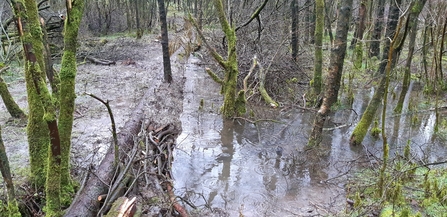A series of willow ‘hydro-hedges’ being built in the basin of a former Kendal reservoir could hold back up to 5,000 cubic metres of water during a storm event like Storm Desmond. Once the hedges are completed, any stored water will release slowly after the flood peak, reducing the impact on properties during a storm event. The reservoir is no longer in use and is owned by United Utilities.
Volunteers from Kendal Conservation Volunteers, a group that works to protect and enhance the natural environment around Kendal and the South Lakes, has started the work at Birds Park, which will continue for some weeks.
Stephen Lockwood from Kendal Conservation Volunteers said: “This is the first natural flood management scheme we have been involved in, so it’s wonderful to be learning skills on the job as we’ve never done anything like this before. Most of the projects we carry out are for the benefit of nature and the landscape. We’re pleased to be involved with a project that will directly help people in Kendal. We go home covered in mud but its great fun!”

